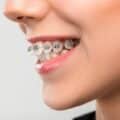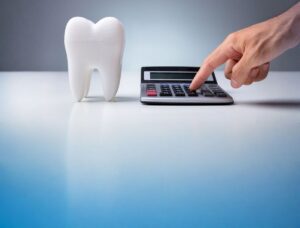Teeth don’t just shift without reason. Genetics, childhood habits, and even daily lifestyle choices play a role in how teeth align over time. Some people are simply born with a smaller jaw, leaving little room for teeth to grow straight. Others develop misalignment due to habits like thumb-sucking, prolonged pacifier use, or mouth breathing.
In Auckland, patients often ask whether crooked teeth are purely cosmetic or if they signal deeper issues. The truth is, alignment affects far more than just appearance. When teeth are out of place, they can put uneven pressure on the jaw, lead to wear and tear, and even make brushing and flossing more difficult. This increases the risk of decay and gum disease—problems that extend beyond aesthetics.
The Link Between Crooked Teeth and Oral Health
Misaligned teeth create tight spaces where food and bacteria get trapped. Even with good brushing habits, these areas can be difficult to clean, leading to plaque buildup, cavities, and gum inflammation. Over time, untreated alignment issues contribute to gum recession, increased tooth sensitivity, and even bone loss.
Beyond oral hygiene, there’s also a functional impact. An uneven bite forces the jaw to work harder to chew properly. This strain can cause jaw pain, clicking sounds, and, in some cases, lead to conditions like temporomandibular joint (TMJ) disorder. Patients with crooked teeth often experience headaches or discomfort when eating—issues that a well-aligned bite can help prevent.
Do Crooked Teeth Always Need Orthodontic Treatment?
Not every case of crooked teeth requires treatment. Some mild misalignments cause little to no impact on oral function. However, when misalignment affects the way teeth come together or leads to difficulty in cleaning, orthodontic intervention becomes more than just an option—it becomes a necessity for long-term health.
Auckland patients who experience discomfort, excessive wear on certain teeth, or difficulty chewing should consider a consultation. Orthodontists assess whether the alignment issue is minor or something that could worsen over time. In many cases, early treatment can prevent more complex and costly dental work in the future.
The Most Effective Treatments for Crooked Teeth
Straightening teeth isn’t a one-size-fits-all approach. Different patients need different solutions depending on the severity of misalignment, age, and personal preferences. The most common options include:
- Traditional Braces: Still one of the most reliable solutions, metal braces gradually guide teeth into alignment using brackets and wires. Ideal for moderate to severe misalignment.
- Ceramic Braces: Similar to metal braces but with tooth-coloured brackets, making them less visible. A strong option for those who need braces but want a more discreet look.
- Clear Aligners: Custom-made, removable trays that shift teeth over time. Popular for their near-invisibility, they work well for mild to moderate cases.
- Lingual Braces: Attached to the back of the teeth, making them completely hidden. These provide powerful alignment correction but can take time to get used to.
For Auckland patients considering treatment, the best choice depends on lifestyle, budget, and the complexity of the alignment issue. A consultation with an orthodontist helps determine which approach will achieve the best long-term results—especially for those wondering how much braces cost on Auckland’s North Shore and what to expect from treatment.
Can Crooked Teeth Get Worse Over Time?
Teeth don’t stay in one position forever. Without intervention, misalignment often worsens as the jaw shifts, teeth wear down, and external forces—like chewing and speaking—exert pressure on the bite. Patients in Auckland frequently ask if their teeth will naturally correct themselves over time. The answer is no.
In fact, untreated crooked teeth can become more pronounced with age. Bone density changes, tooth loss, and gum recession all contribute to further misalignment. Even minor crowding can progress into more severe overlapping, making future orthodontic correction more complex and time-consuming. Early intervention ensures better long-term results and prevents unnecessary complications.
How to Prevent Further Misalignment
For those who already have some degree of misalignment, there are ways to prevent teeth from shifting further. Good oral habits play a crucial role. Maintaining strong gum health through regular brushing and flossing helps keep teeth stable. Patients should also be mindful of unconscious habits like nail-biting, teeth grinding, or tongue thrusting, as these can place pressure on teeth and alter alignment over time.
Retainers are another key factor. After orthodontic treatment, wearing a retainer as prescribed by an orthodontist prevents teeth from moving back to their original position. Even for those who haven’t had braces or aligners, custom retainers can help keep teeth from drifting further out of place.
When Is the Best Time to Correct Crooked Teeth?
Orthodontic treatment can be effective at any age, but early intervention often leads to the best results. For children and teenagers, the jaw is still developing, making it easier to guide teeth into their correct positions. In these cases, treatment can prevent more serious alignment issues from forming later in life.
That said, many Auckland adults are now seeking orthodontic treatment, recognising that it’s never too late to improve their smile and oral health. Modern solutions, like clear aligners and discreet ceramic braces, make it possible to straighten teeth without the visibility of traditional metal braces. The key is seeking professional advice at the right time to determine the most effective course of action.
Are DIY Teeth Straightening Methods Safe?
With the rise of social media trends, some people attempt DIY teeth straightening using rubber bands, online aligner kits, or other unregulated methods. These approaches are not only ineffective but can cause serious long-term damage. Moving teeth requires precise force and careful monitoring. Without professional supervision, there’s a high risk of tooth loss, gum recession, and permanent bite issues.
Auckland patients should be cautious of at-home orthodontic products that claim to provide fast results without orthodontist oversight. While mail-order aligners may seem convenient, they lack the diagnostic assessments and personalised treatment planning needed for safe and effective results. Orthodontic treatment is an investment in long-term health, and working with a trained professional ensures the safest path to a well-aligned smile.
What Are the Health Risks of Leaving Crooked Teeth Untreated?
Crooked teeth are not only an aesthetic concern—they can affect overall oral health in ways many patients don’t realise. When teeth are misaligned, they create tight spaces that make thorough cleaning difficult. Plaque and bacteria accumulate in these areas, increasing the risk of tooth decay and gum disease.
A misaligned bite can also place excessive pressure on certain teeth, leading to uneven wear, enamel erosion, and even fractures over time. In some cases, long-term misalignment contributes to temporomandibular joint (TMJ) issues, causing jaw pain, headaches, and difficulty chewing.
Orthodontic treatment does more than straighten teeth—it protects long-term oral health. Addressing alignment early helps prevent avoidable dental complications, saving patients from costly restorative treatments in the future.
How Does Orthodontic Treatment Correct Crooked Teeth?
Modern orthodontics offers a range of solutions for correcting misalignment, from traditional braces to clear aligners. Each method applies controlled pressure to gradually move teeth into their ideal positions.
- Braces remain a highly effective solution, particularly for moderate to severe crowding. Metal and ceramic braces provide precise control over tooth movement, ensuring lasting alignment.
- Clear aligners are an increasingly popular choice in Auckland for patients who want a discreet and flexible alternative to braces. These removable trays shift teeth over time while allowing patients to maintain their usual eating and oral hygiene habits.
- Early intervention treatments, such as space maintainers and palate expanders, can guide proper dental development in children and reduce the need for more extensive orthodontic work later in life.
An orthodontist will assess the degree of misalignment and recommend the most suitable treatment based on individual needs and long-term stability.
What Should Auckland Patients Expect During Treatment?
Orthodontic treatment is a gradual process that requires commitment and consistency. Patients typically visit their orthodontist for periodic adjustments or aligner changes to ensure steady progress. Treatment time varies depending on the complexity of the case, but most patients in Auckland complete their orthodontic journey within 12 to 24 months.
During treatment, maintaining excellent oral hygiene is essential. Regular brushing, flossing, and professional cleanings help prevent plaque buildup around brackets or aligners. Patients should also follow dietary recommendations to avoid damaging orthodontic appliances.
Auckland orthodontists provide personalised guidance to ensure each patient’s treatment stays on track. From the initial consultation to the final retainer fitting, every step is designed to achieve a well-aligned, healthy smile.
Investing in Orthodontic Treatment for a Healthier Smile
Crooked teeth impact far more than appearance—they affect oral health, bite function, and overall confidence. Orthodontic treatment offers long-term benefits, providing a solution that enhances both dental function and aesthetics.
Patients in Auckland who are concerned about misalignment should seek professional advice rather than waiting for the problem to worsen. With advancements in orthodontic technology, achieving a straight, healthy smile has never been more accessible.
For those considering treatment, consulting an experienced orthodontist is the best first step. Finding an orthodontist near you is also pretty simple with resources like the Orthodontist Finder tool on the New Zealand Association of Orthodontists website. A personalised assessment ensures the right approach, setting the foundation for lifelong dental health and confidence.
Have you read these articles?
 Braces Or Clear Aligners: Which Is The Best Overbite Treatment?
Braces Or Clear Aligners: Which Is The Best Overbite Treatment?
 Clear Aligner Technology Explained: What Auckland Patients Need to Know
Clear Aligner Technology Explained: What Auckland Patients Need to Know
 Spotlight on Orthodontic Care: Aligning Jaws and Boosting Health in Kerikeri
Spotlight on Orthodontic Care: Aligning Jaws and Boosting Health in Kerikeri
 Understanding and Correcting Overbites: A Useful Patient Guide
Understanding and Correcting Overbites: A Useful Patient Guide
 Helpful Guide to How Christchurch Orthodontists Fix Teeth Crowding
Helpful Guide to How Christchurch Orthodontists Fix Teeth Crowding






